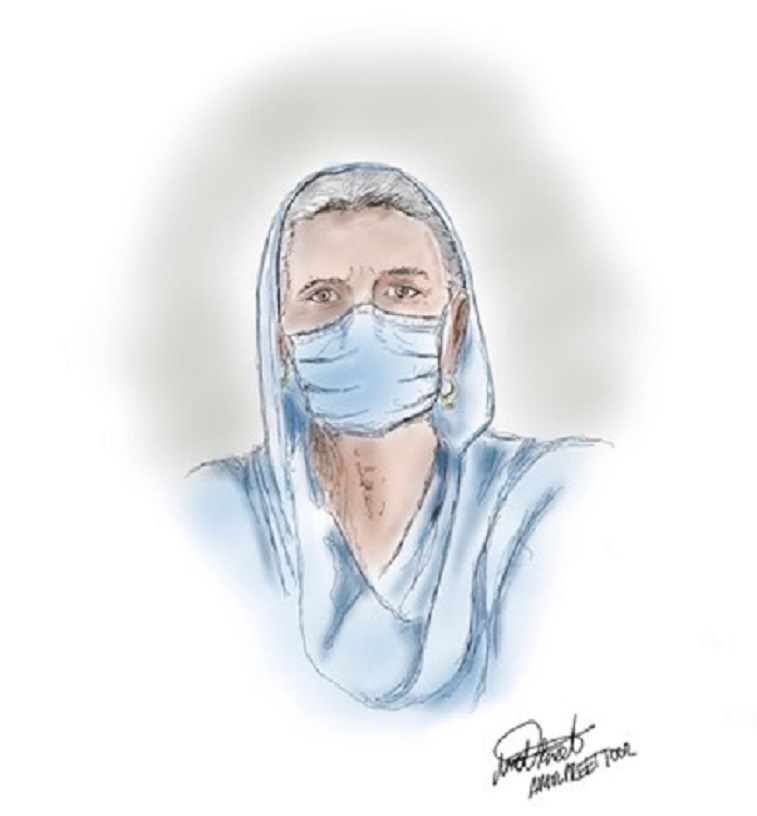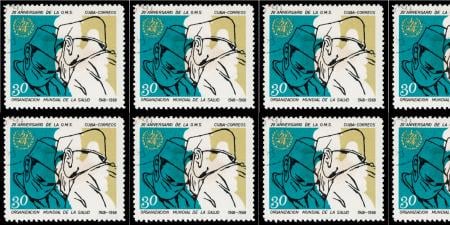Abstract
Optimal health care is nearly impossible for patients who have few or no languages in common with their clinicians because it is hard to exchange information and questions about interventions’ risks and benefits and about how to motivate good health outcomes. This digital drawing considers an elderly patient with limited English proficiency who understands and who wears a mask.
Figure. Cautious Eyes

Media
Digital drawing.
Caption
Communication is vital in patient-clinician relationships. Patients with limited English proficiency experience poor clinical outcomes, restricted access to care, and reduced satisfaction with their health services.1,2,3 During the COVID-19 pandemic, language barriers’ effects on uptake of public health and safety messaging4 underscored the importance of interpreters’ roles in providing high-quality health care and access to information all patients need.3 This digital drawing shows an elder, masked Sikh community member who appears to be following COVID-19 safety precautions, despite language or cultural barriers. Her eyes suggest her cautious demeanor and perhaps curiosity about what the unmasked don’t understand.
References
- Squires A. Evidence-based approaches to breaking down language barriers. Nursing. 2017;47(9):34-40.
-
Floyd A, Sakellariou D. Healthcare access for refugee women with limited literacy: layers of disadvantage. Int J Equity Health. 2017;16:195.
-
Al Shamsi H, Almutairi AG, Al Mashrafi S, Al Kalbani T. Implications of language barriers for healthcare: a systematic review. Oman Med J. 2020;35(2):e122.
- Macias Gil R, Marcelin JR, Zuniga-Blanco B, Marquez C, Mathew T, Piggott DA. COVID-19 pandemic: disparate health impact on the Hispanic/Latinx population in the United States. J Infect Dis. 2020;222(10):1592-1595.



